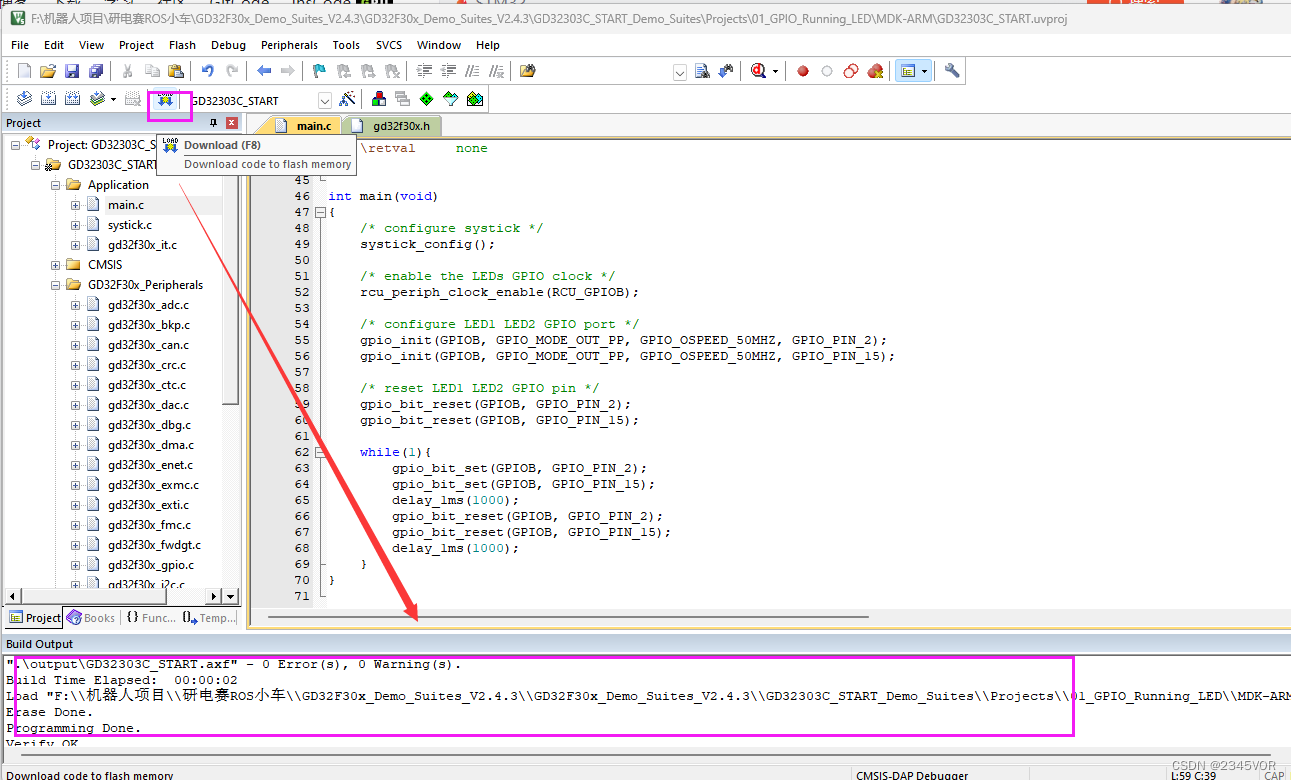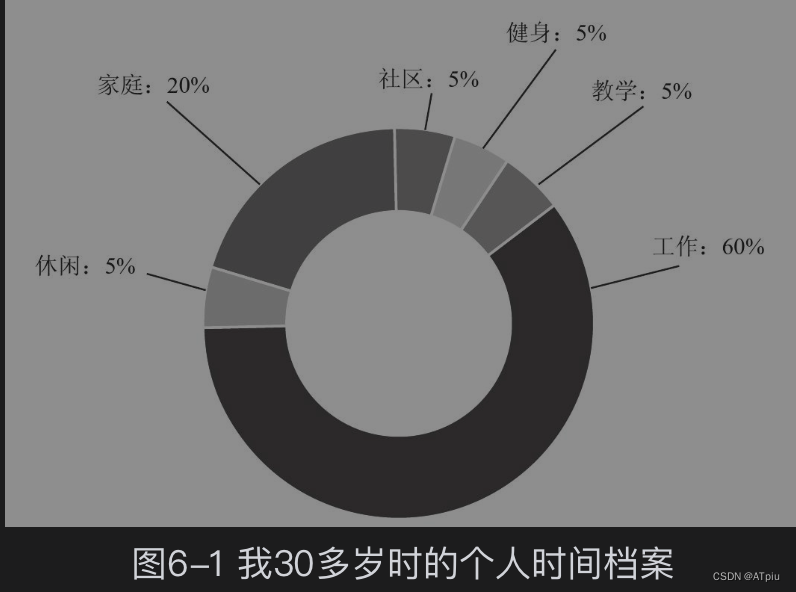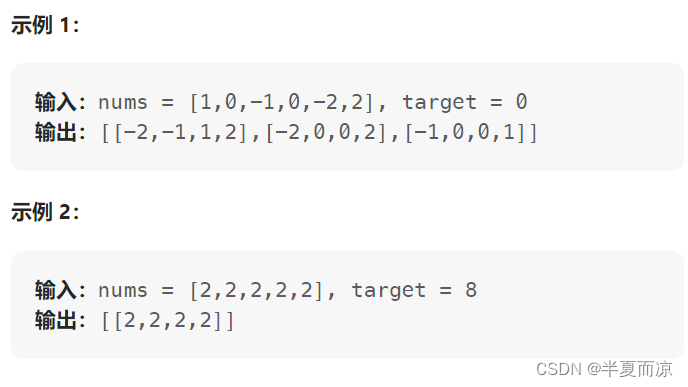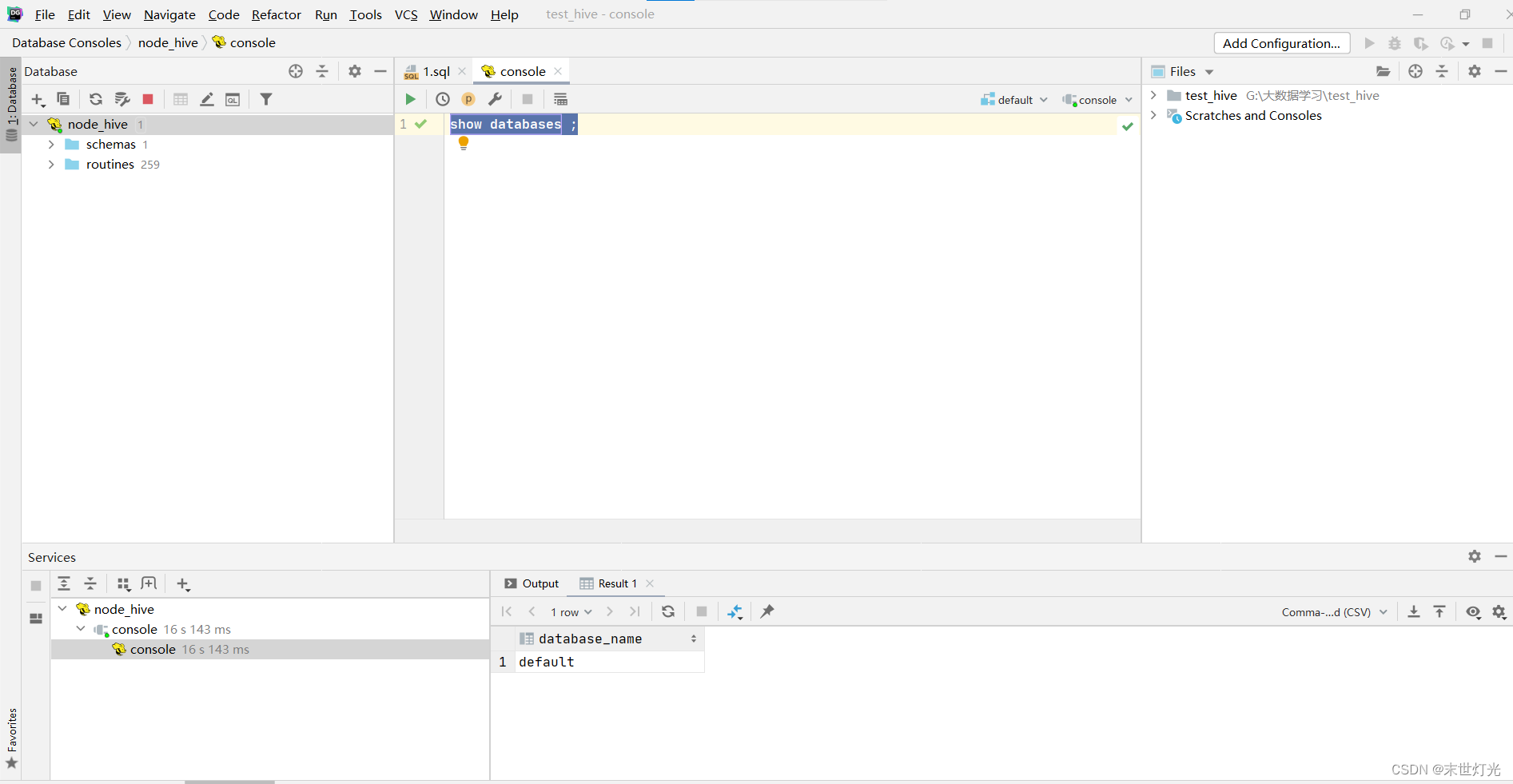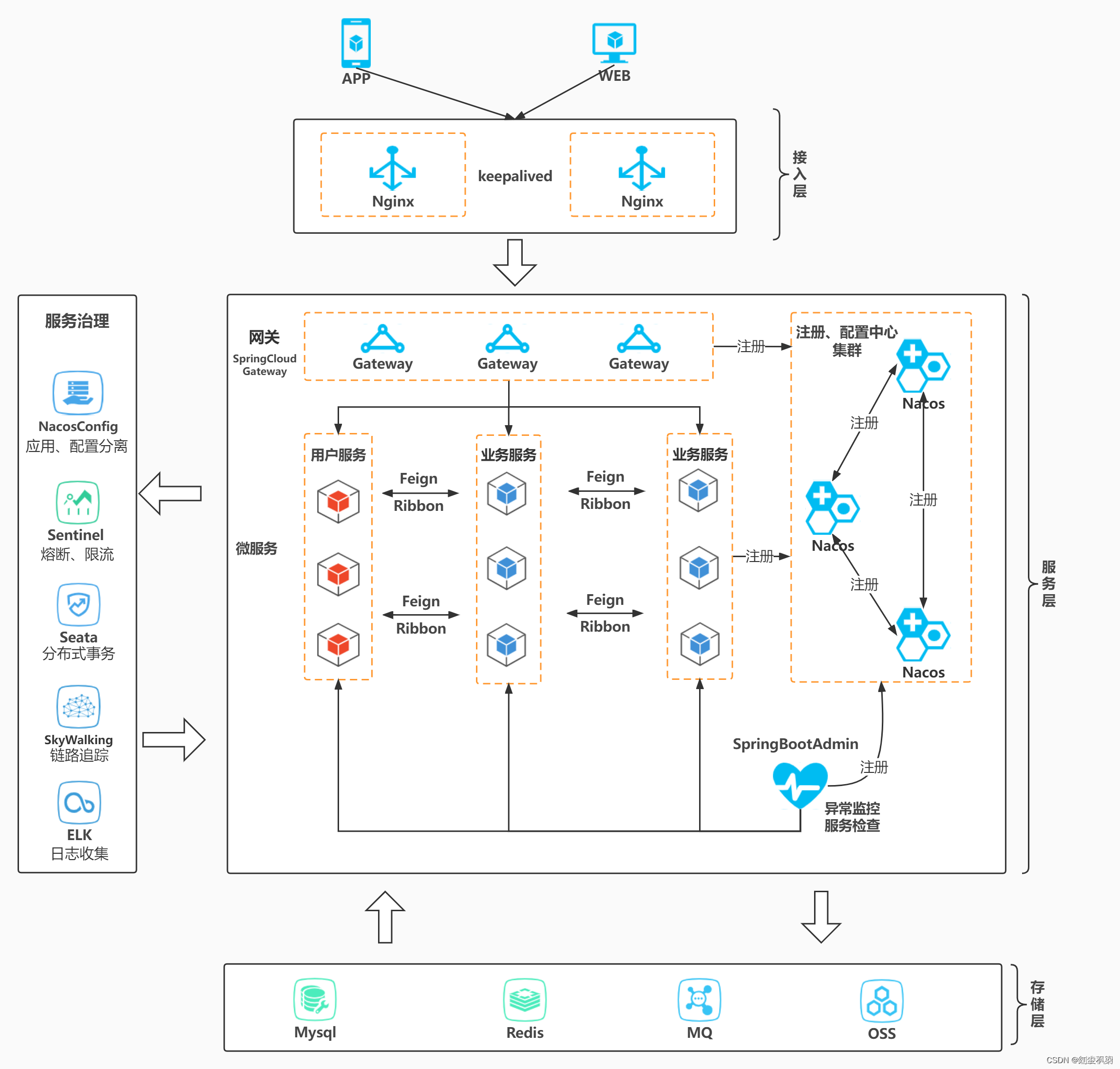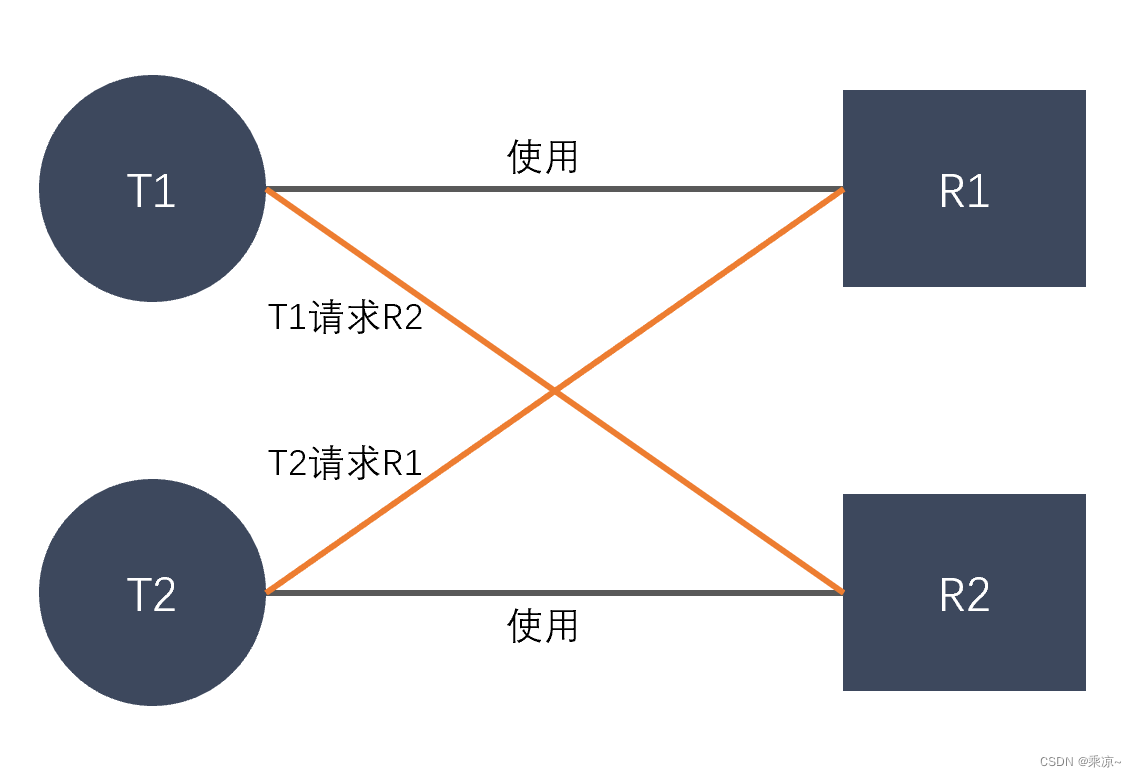写在前面的话
这部分只解释代码,不对线性层(全连接层),卷积层等layer的原理进行解释。
尽量写的比较全了,但是自身水平有限,不太确定是否有遗漏重要的部分。
教程参考:
https://pytorch.org/tutorials/
https://github.com/TingsongYu/PyTorch_Tutorial
https://github.com/yunjey/pytorch-tutorial
文章目录
- 模型的定义
- nn.Module()
- nn.Parameters()
- module中的register是如何实现的
- Module()的一些方法
- add_module()
- children() 和 named_children()
- parameters() 和 named_parameters()
- apply(fn)
- modules() and get_submodule(target)
- state_dict()
- 模型的搭建
- 设定训练设备
- 定义自己的网络类
- 一些相关的方法
- nn.Sequential()
- nn.ModuleList()
- nn.ModuleDict()
模型的定义
模型,也就是我们常说的神经网络。它由大量相连连同的节点组成,形成类似于人体内神经的结构,所以被称为神经网络。在使用时,数据会通过网络中一层一层的节点,经过运算后得到一个结果。
神经网络,就由在数据上执行计算操作的layers(层)或者modules(模块)组成。torch.nn提供了我们组成一个神经网络需要的所有单位原件,我们可以使用torch.nn下的各个class,来组成我们的神经网络。
nn.Module()
在pytorch中所有的module都继承了nn.Module(),都是它的子类。一个神经网络也是一个module,只不过它本身包含了其它别的module。
源码链接:https://pytorch.org/docs/stable/_modules/torch/nn/modules/module.html#Module
nn.Parameters()
源码链接:https://pytorch.org/docs/stable/_modules/torch/nn/parameter.html#Parameter
nn.Parameter()它并没有继承nn.Module(), 而是继承了torch.Tensor()。它同样被放到torch.nn这个模块下面,是因为它在用于nn.Module()时会呈现出和一般的tensor不一样的特征。
它会天然地被添加到Module.parameters中去,作为一个可训练的参数使用。
module中的register是如何实现的
在构建网络时,我们基于nn.Module()定义我们自己的模型的class,并在初始化的过程中使用多个不同的layer或者module来组成我们的模型。这些layer和module都会被register到网络中,方便我们使用参数名进行访问。
比如说我们现在定义一个非常简单的网络。这个网络在初始化时定义了三个变量,分别是self.t1:一个普通的tensor,self.p1:一个parameter和self.conv1:一个卷积层。这个卷积层,同样也继承了nn.Module(),它会被储存在Module._modules中。
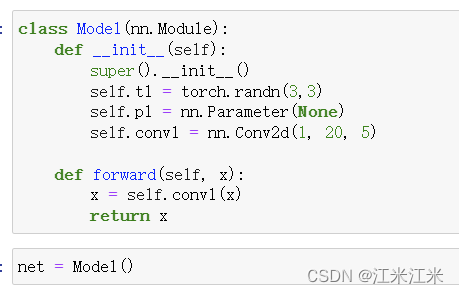
self._modules会在你构建网络的过程中进行更新,更具体的讲,在你执行obj.name = value的命令时,一个名为 __setattr__的函数会起作用,判断你所构建的变量的类型。
比如说你的变量的类型是"Parameter",那么它就会被加到self._parameters中去;如果你的变量的类型是"Module",那么它就会被加到self._modules中去。下方举例了添加module的代码,具体可以参考源码链接。
[docs] def add_module(self, name: str, module: Optional['Module']) -> None:
r"""Adds a child module to the current module.
The module can be accessed as an attribute using the given name.
Args:
name (str): name of the child module. The child module can be
accessed from this module using the given name
module (Module): child module to be added to the module.
"""
if not isinstance(module, Module) and module is not None:
raise TypeError("{} is not a Module subclass".format(
torch.typename(module)))
elif not isinstance(name, str):
raise TypeError("module name should be a string. Got {}".format(
torch.typename(name)))
elif hasattr(self, name) and name not in self._modules:
raise KeyError("attribute '{}' already exists".format(name))
elif '.' in name:
raise KeyError("module name can't contain \".\", got: {}".format(name))
elif name == '':
raise KeyError("module name can't be empty string \"\"")
for hook in _global_module_registration_hooks.values():
output = hook(self, name, module)
if output is not None:
module = output
self._modules[name] = module
在上方,我们已经使用net = Model()实例化了我们的网络,现在来看一下网络里面的参数情况。
可以看到,我们的’p1’,因为类别是"Parameter",所以它被添加到了net._parameters中去;我们的’conv1’,类别是"Module",所以它被添加到了net._modules中去;而我们的t1,因为啥也不是,所以单独地被放到了net.t1。和普通的class中的属性没有什么区别。
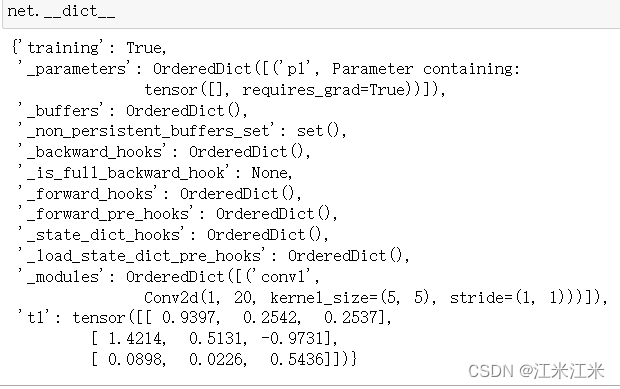
Module()的一些方法
这里举例的方法并不是很全,主要是介绍了一些我认为可以去了解的函数。更多的细节还是要自己查询文档。
https://pytorch.org/docs/stable/generated/torch.nn.Module.html
add_module()
在上方我们提供了add_module()的源码,它起到的就是register_module()的作用。
除了使用obj.name = value类似的命令定义网络中的module以外,我们也可以使用self.add_module(name, value)的方法,两者是等价的。需要注意的是,这里的value必须是一个module。
如下图,可以看到,我们用两种方法,都成功将一个卷积层加入到了net._modules中去。
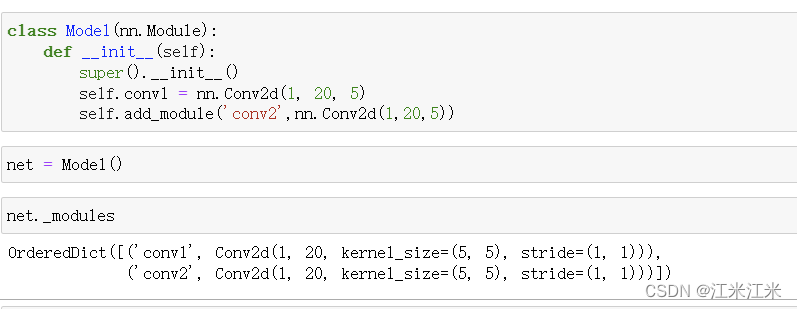
当我们想使用add_module()方法加入一个非module类型的变量时,则会出现报错。从方便的角度讲,一般我们也不会使用这样的方法来构建我们的模型,还是obj.name = value更为简单常用。
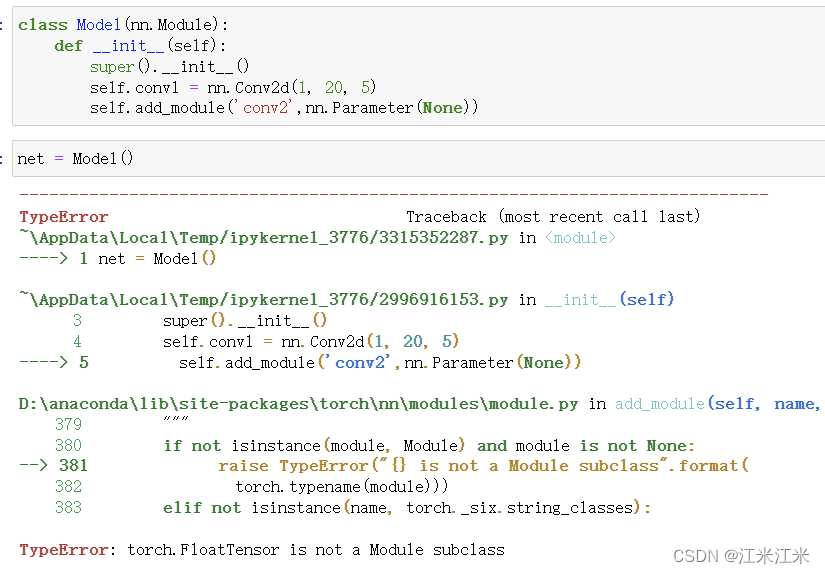
children() 和 named_children()
children()和named_children()都返回了一个迭代器,两者也是很好区分。children()只返回了定义的模型中的module,而named_children()在返回module的同时,还返回了module的名字。
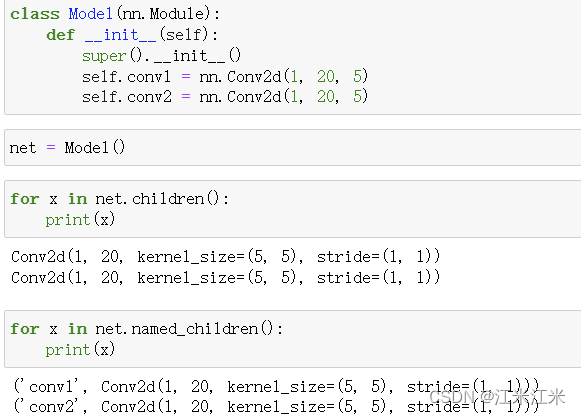
parameters() 和 named_parameters()
类似于上面的children()和named_children(),parameters()和named_parameters()同样也返回了一个迭代器,只不过迭代器中的内容不再是module和它的名字,而是换成了module._parameters。
我们在这里使用Linear层做例子。
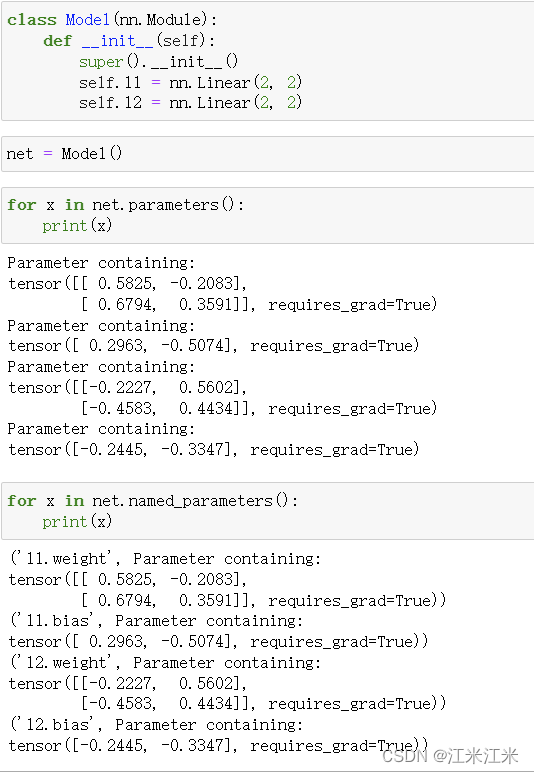
apply(fn)
apply()的作用是在你模型的所有module上执行同一个函数,因此输入参数是一个函数,在使用时,它会对你的self.children()的结果进行遍历,并在每个结果上递归地都执行传入的函数。
def apply(self, fn)
for module in self.children():
module.apply(fn)
fn(self)
return self
比如说,在对模型进行权重初始化时,就可以使用这个函数。在tutorial文档中也给出了相应的例子。下方的代码给出了一个初始化权重的方法,假如module是一个线性层,就将它的权重的数值全部别为1。我们在上方定义的模型上使用这个函数。
@torch.no_grad()
def init_weights(m):
print(m)
if type(m) == nn.Linear:
m.weight.fill_(1.0)
print(m.weight)
可以看到在我们的结果中,net中的l1和l2的weights都受到了影响,但是bias没有发生变化。你也可以使用类似的方法改变它的bias或者别的module中的权重值。
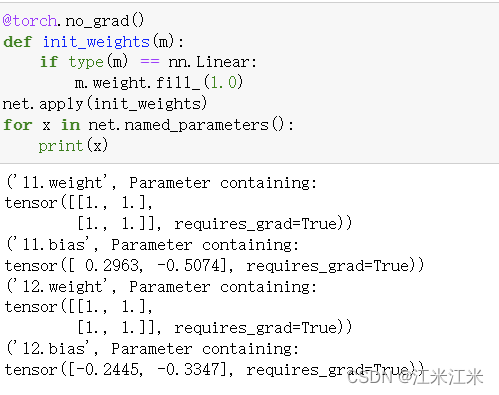
modules() and get_submodule(target)
modules()函数也可以返回我们的网络中的module,来看一下它和children()的区别。使用我们之前构建的有两个卷积层的网络,可以看到net.modules()除了返回它的submodule外,还返回了它本身。
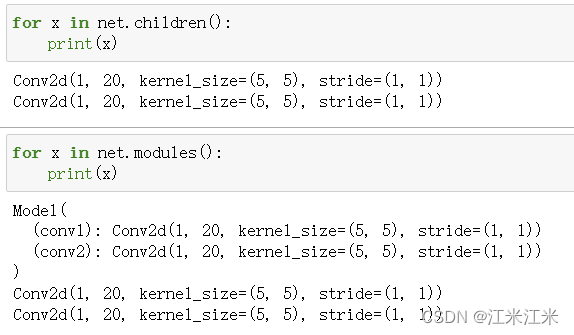
而get_submodule(target)中的target,代表你想获得的module的name,使用name可以获得对应的module。

state_dict()
state_dict()是一个比较重要的方法,它可以orderdict的形式返回我们的模型中各个模块的权重和权重名。
以我们定义的包含两个线性层的模型为例子,state_dict()返回了l1的weight和bias以及l2的weight和bias。并且我们可以通过名称来检测对应的权重值。
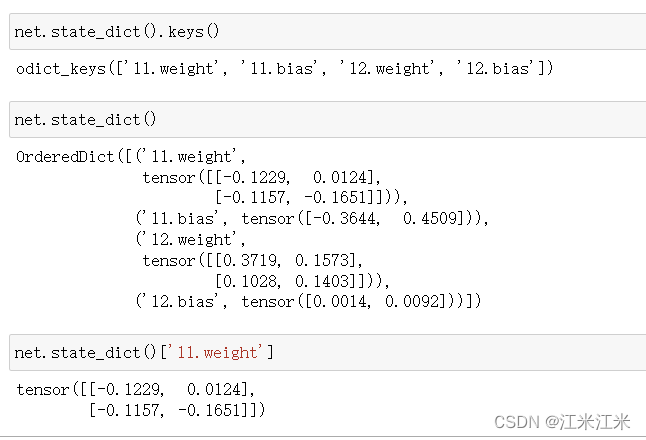
模型的搭建
设定训练设备
假设我们现在有一个搭建好的模型net,我们可以将模型放到我们希望使用的设备上,从而利用设备的加速能力。
在pytorch tutorial同样给出了代码样例。
device = (
"cuda"
if torch.cuda.is_available()
else "mps"
if torch.backends.mps.is_available()
else "cpu"
)
print(f"Using {device} device")
net.to(device)
在确定设备后,我们使用.to()函数,就可以把网络放到对应的设备上。
定义自己的网络类
定义模型的三要素:
- 继承nn.Module()
- 在__init__中定义组件
- 在forward()中确定组件使用的顺序
我们要基于nn.Module()类来构建我们自己的网络,并且在__init__中进行初始化,我们可以使用各种各样的组件来完成我们的网络,并在forward中决定我们的输入在各个组件中传递的顺序。
需要注意的是,这个顺序不是随便决定的,我们要考虑我们使用的组件的输入维度和输出维度。
比如说下面这个例子,我们定义了两个forward,其中第一个forward()会在__call__()中被调用,所以我们可以使用net(x)直接调用第一个forward(),第二个forward2()则需要用函数名调用。
在这个例子中,我们定义了两个线性层,其中l1的输入大小为5,输出大小为2。l2的输入大小为2,输出大小为2。而我们创建的输入变量的大小是(3,5),相当于batchsize = 3,channel=5,因此在先使用l1后使用l2时,代码可以成功执行。但是反过来后代码就会报错。
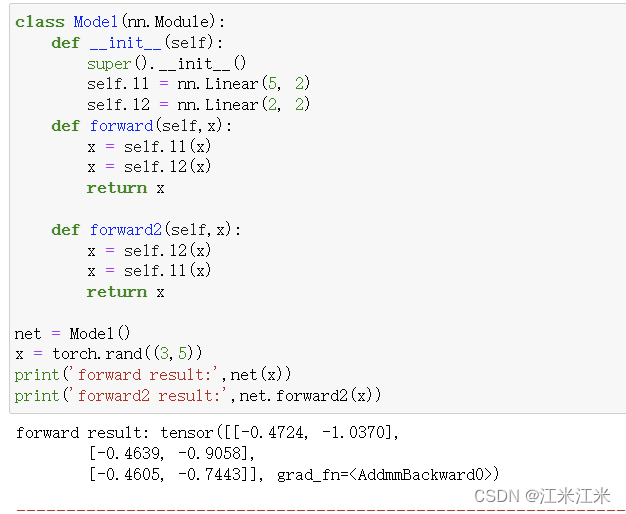
一些相关的方法
nn.Sequential()
nn.Sequential()方法也继承了nn.Module(),它的作用是作为一个container,把组件按照入参时的顺序添加进来,并且在forward()时,传入的数据也会按照顺序通过这些组件。
nn.Sequential()的传入参数有两种形式,第一种是OrderedDict[str, Module],其中有序字典的key代表的是你给要传入的module起的名字。如果使用的不是有序字典作为输入,而是直接使用的Module,那么这个方法会按从0开始的index给组件命名。
具体可以直接看源码:
可以看到,在__init__()函数中,该方法对输入的组件进行了遍历,并且使用add_module()进行register。
def __init__(self, *args):
super().__init__()
if len(args) == 1 and isinstance(args[0], OrderedDict):
for key, module in args[0].items():
self.add_module(key, module)
else:
for idx, module in enumerate(args):
self.add_module(str(idx), module)
我们给出一个非常简单的样例,我们使用nn.Sequential()构建一个简单的网络,模型里只有两个线形层。这个定义好的网络是直接可以使用的。

需要注意的是,nn.Sequential()在forward()中进行数据的传递时是按照组件传入的顺序进行的,因此你的组件顺序不对,仍然会出现报错。
nn.ModuleList()
nn.ModuleList()方法也继承了nn.Module(),它和nn.Sequential()一样,也是一个container,但是两者也存在一些区别。
nn.ModuleList()中没有实现forward()的方法,它只是把传入的组件放到了一个类似于python中list的序列中。
nn.ModuleList()中也不可以使用OrderedDict作为输入。
nn.ModuleList()中传入组件时不需要考虑组件的顺序。
以下给入了一个使用的例子。
class MyModule(nn.Module):
def __init__(self):
super().__init__()
self.linears = nn.ModuleList([nn.Linear(10, 10) for i in range(10)])
def forward(self, x):
# ModuleList can act as an iterable, or be indexed using ints
for i, l in enumerate(self.linears):
x = self.linears[i // 2](x) + l(x)
return x
要注意的是我们不能使用python的list来代替nn.Module(),因为之前提到过在进行register时会判断你所创建的obj.name = value的value的类别,假如这个类不是Module,则不会被add_module()添加到self._modules中去。
nn.ModuleDict()
nn.ModuleDict()与nn.ModuleList()类似,不同的是它传入的是一个dict。这也弥补了nn.ModuleList()中不能给组件起名字的缺点,传入的dict中的key就代表了对应组建的名字。
这个方法同样也没有实现forward()函数。
下方给出一个使用的例子。在forward()中调用组件时,用的也不再是nn.ModuleList()中的index,而是dict中的key。
class MyModule(nn.Module):
def __init__(self):
super().__init__()
self.choices = nn.ModuleDict({
'conv': nn.Conv2d(10, 10, 3),
'pool': nn.MaxPool2d(3)
})
self.activations = nn.ModuleDict([
['lrelu', nn.LeakyReLU()],
['prelu', nn.PReLU()]
])
def forward(self, x, choice, act):
x = self.choices[choice](x)
x = self.activations[act](x)
return x



